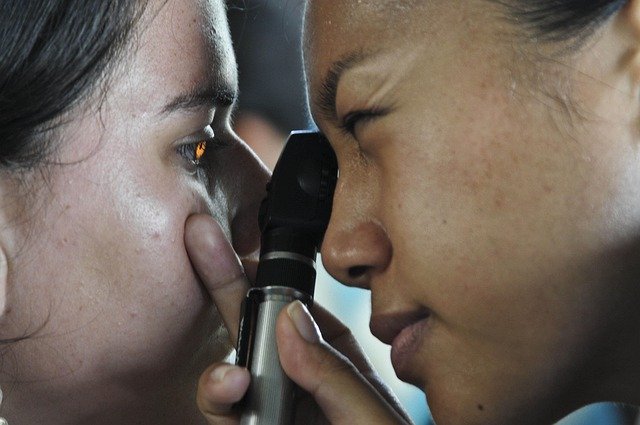What Triggers Age-Related Macular Degeneration and Which Foods to Avoid? Practical Guide for the United States
Fact: Age-related macular degeneration is a leading cause of central vision loss in people over 50. This guide outlines what harms the macula, the main modifiable risks, and the foods and dietary patterns common in the United States to limit in order to help slow progression and protect vision.

What is age-related macular degeneration (AMD)?
Age-related macular degeneration (AMD) happens when the macula—the small central zone of the retina that provides sharp central vision—becomes damaged with age. AMD generally begins after age 50 and is a major cause of central vision loss in older adults. There are two primary types: - Dry AMD (about 80% of cases): macular tissue thins and protein/lipid clumps called drusen build up. Progression is usually gradual but can progress to geographic atrophy (permanent cell loss). - Wet AMD (less common but more severe): abnormal new blood vessels grow beneath the retina and leak fluid or blood, causing faster and often sudden vision loss.
As of 2025, AMD affects millions of people in the United States and is a leading cause of irreversible central vision impairment.
How AMD develops: oxidative stress, inflammation and deposits
AMD is driven by multiple interrelated processes. Important mechanisms include: - Oxidative stress: an imbalance between damaging free radicals and protective antioxidants that progressively injures retinal cells. - Chronic inflammation: immune activity and inflammatory proteins can contribute to tissue damage and drusen formation. - Lipid and protein deposits (drusen): drusen beneath the retina resemble atherosclerotic plaque and are linked with further retinal injury and higher progression risk. - In wet AMD, growth factors promote abnormal blood vessel growth under the retina (neovascularization), which can leak and scar the macula.
Recognizing these mechanisms helps explain why antioxidant-rich and anti-inflammatory diets are commonly recommended to slow progression.
Established risk factors you can act on — and those you cannot
Non-modifiable risk factors: - Age (risk rises after about 50) - Family history and certain genetic variants - Race/ethnicity (White individuals show higher epidemiologic risk)
Modifiable risk factors: - Smoking: one of the strongest modifiable risks for AMD progression - Cardiovascular disease and high cholesterol - Obesity, hypertension, and metabolic syndrome - Diet high in pro‑inflammatory components and an imbalance of omega‑6 to omega‑3 fats (typical U.S. diet)
Focusing on modifiable factors is the most practical and effective strategy for slowing AMD progression.
Screening and early detection: why it matters
Early changes may be subtle. Regular eye exams with dilated retinal evaluation and imaging (optical coherence tomography — OCT; fluorescein angiography or OCT angiography when indicated) detect AMD earlier, when monitoring and treatment are most effective. Daily self‑checks with an Amsler grid can help you notice new distortion or blind spots; report any change to your eye care professional promptly.
Early detection enables: - Timely start of evidence-based nutritional guidance (AREDS/AREDS2 recommendations when appropriate) - Rapid treatment of wet AMD (anti‑VEGF injections) to limit vision loss - Access to vision rehabilitation and aids to preserve independence
Foods and dietary patterns to avoid to help slow AMD progression
Diet influences inflammation, oxidative stress, and lipid metabolism—pathways relevant to AMD. In the United States, common dietary contributors to AMD risk or progression include:
- Ultra-processed foods: packaged snacks, ready meals, and many convenience foods are high in added sugars, unhealthy fats, and sodium and promote inflammation.
- Refined carbohydrates and high‑glycemic foods: white bread, pastries, many sweets and desserts can worsen metabolic risk and inflammation.
- Excessive omega‑6 vegetable seed oils: frequent use of oils high in omega‑6 (corn, soybean, sunflower) can create a high omega‑6 : omega‑3 ratio, promoting a pro‑inflammatory state; the typical U.S. ratio is much higher than recommended.
- Processed and red meats: associated with higher cardiovascular risk and observed as negative predictors for AMD progression in some studies.
- Fried foods and foods high in trans and saturated fats: these increase cardiovascular risk and may indirectly raise AMD risk through shared mechanisms.
- High‑sodium highly processed foods: can impair vascular health, which affects retinal circulation.
- Excessive alcohol intake: linked with other eye issues and broader health risks.
- Overreliance on supplements with beta‑carotene if you are a current or recent smoker: beta‑carotene increases lung cancer risk in smokers and should be avoided by that group.
Rationale: these foods elevate oxidative stress, inflammation, and poor cardiovascular health—factors that overlap with AMD pathways. Cutting back on these items benefits both overall health and the retina.
Foods and dietary patterns to favor
A dietary pattern that consistently appears protective for AMD is the Mediterranean-style, nutrient-dense diet and specific eye‑friendly foods: - Dark leafy greens and colorful vegetables (kale, spinach, collards, peppers, carrots): rich in lutein and zeaxanthin and antioxidants that concentrate in the macula. - Yellow/orange fruits and vegetables (carotenoid sources) and whole fruits. - Fatty fish (salmon, mackerel, sardines, herring): marine omega‑3s are associated with lower AMD risk in dietary studies; whole‑food sources may be more beneficial than supplements in some contexts. - Extra‑virgin olive oil: monounsaturated fats and antioxidant compounds linked with reduced risk. - Legumes, nuts and seeds (walnuts, chia, flax): plant nutrients, fiber and beneficial fats. - Whole grains and high‑fiber foods instead of refined carbohydrates.
Evidence summary: large-scale trials (AREDS/AREDS2) demonstrated that specific combinations of antioxidants and minerals can slow progression to late AMD in people with certain drusen patterns. The AREDS2 formulation replaced beta‑carotene with lutein/zeaxanthin and is appropriate for some patients; discuss with your ophthalmologist to determine if you qualify. Omega‑3 supplement trials have produced mixed results—dietary fish intake is consistently associated with benefit, while high‑dose supplements show variable outcomes.
Practical daily steps and monitoring
- Quit smoking and avoid secondhand smoke.
- Maintain a healthy weight and manage blood pressure and cholesterol with your primary care team.
- Assemble a Mediterranean-style plate: vegetables, fruits, legumes, whole grains, fish several times per week, olive oil for cooking/dressing, and nuts.
- Cut down on ultra‑processed foods, refined carbs, and frequent fried/processed meats.
- Favor marine sources of omega‑3s (fish) over omega‑6‑heavy seed oils; read labels and vary cooking oils.
- Use a daily Amsler grid and seek prompt ophthalmology care for any visual distortion or new blind spots.
- Discuss AREDS2 supplements and any other supplements with your ophthalmologist—especially if you smoke or have lung cancer risk factors (avoid beta‑carotene in smokers).
- Keep retinal imaging and exam intervals as recommended by your eye care professional.
When to see an eye specialist and treatment options
See an ophthalmologist promptly if you notice visual distortion, central blur, or new blind spots. Treatment options include: - Anti‑VEGF injections for wet AMD, which can reduce leakage and preserve vision when started early. - Newer therapies (as of 2025) are available for geographic atrophy (certain dry AMD cases), such as intravitreal agents that can slow atrophy in selected patients; discuss eligibility with a retinal specialist. - AREDS/AREDS2 supplement regimens for qualifying patients with intermediate AMD or specific drusen patterns. - Vision rehabilitation and low-vision aids to maximize remaining sight and independence.
Conclusion
AMD results from age-related damage to the macula driven by oxidative stress, inflammation and deposit formation. While age and genetics contribute, many factors are modifiable. In the United States, shifting away from ultra‑processed foods, refined carbs, frequent fried and processed meats, and high omega‑6 oils toward a Mediterranean-style, antioxidant‑rich diet (leafy greens, colorful vegetables, fish, olive oil, legumes and nuts) combined with smoking cessation, cardiovascular risk control and regular eye exams provides a practical approach to slow AMD progression and protect vision.
Sources
- American Academy of Ophthalmology — “Understanding Macular Degeneration” (AAO)
- Mayo Clinic — “Dry macular degeneration” (Mayo Clinic)
- Cleveland Clinic — “Diet & Eye Health: See the Connection” (Cleveland Clinic podcast and educational content)
(For details on AREDS/AREDS2, anti‑VEGF therapies, and emerging treatments for geographic atrophy, consult an ophthalmologist. This article provides general educational information and is not a substitute for individualized medical advice.)




